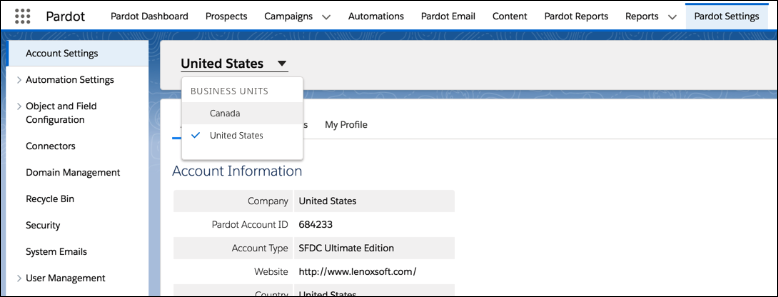Earlier this year, Salesforce introduced Pardot Business Units, a new feature looking to provide regional teams and sub-brands the tools they need to reach their own segmented audiences.
This functionality was designed for businesses which have marketing goals based on geography or product lines, with an aim to help each division focus on their own unique marketing objectives.
Since the launch of Business Units, there have been a set of questions that get asked repeatedly around the functionality of the feature. I’ve collated these questions here.
Do we have access to Business Units in our account?
Possibly. Pardot Business Units are available only to customers who purchased or upgraded to Pardot Advanced Edition on or after February 11, 2019. If you’re looking to enable Business Units, speak to your Pardot Account Executive.
How can we decide which users belong to which Business Unit?
This happens during set up. You’ll need to use profiles when configuring Salesforce User Sync.
Can Contacts/Leads belong to multiple Business Units?
Not at this time, no. You can decide which Business Unit a Contact/Lead belongs to using Marketing Data Sharing (this is the recommended way to do this) or through organisation-wide defaults and sharing rules.
Can we share assets across Business Units?
No, each Business Unit has it’s own assets.
Can we switch between Business Units?
Yes, absolutely. Some users, like Pardot admins and marketing managers, can switch between business units to manage assets, records, and settings. This is done using the Business Units Switcher.
The current business unit name that you are in is displayed on the Pardot Dashboard tab in the Pardot Lightning app.
If you want to switch between business units, you will need to navigate to the Pardot Settings tab in the Pardot Lightning app, and then select a business unit from the dropdown.

There are a couple of caveats to this:
- You must be using a Pardot account that was purchased after April 25, 2019.
- You’ll need access to the Pardot Lightning app.
- You must have a user record in more than one business unit.
How does Domain Management work?
Each Business Unit can have its own Email Sender Domain, but it can also be the same across all Business Units if it needs to be.
On the other hand, Tracker Domains will need to be different across Business Units.
Should we be using Business Units?
While this is going to come down to whether Business Units is a good fit for your organisation, there are certainly a couple of really key benefits to using Business Units:
- You may see an increased efficiency in performance because the system doesn’t need to look at masses of data for a dynamic list, automation rule, export. (This is going to depend on how many dynamic lists and automation rules you use in the first place).
- Using Business Units helps users focus on the data they have because everything in the BU will be relevant specifically to them.
- It makes managing sync errors easier.
- You have the freedom to isolate sending reputations, as each BU can have its own sending domain.
- Each BU has its own account limits.
If you are considering using Business Units, and would like some advice, please get in touch.

